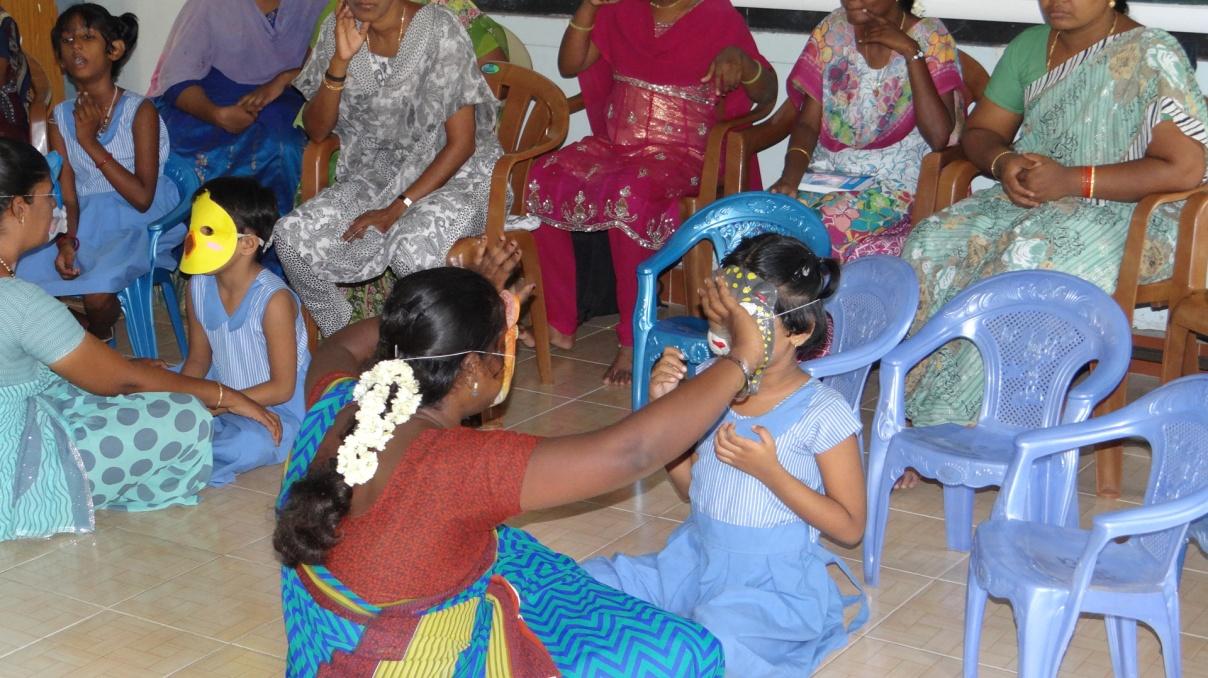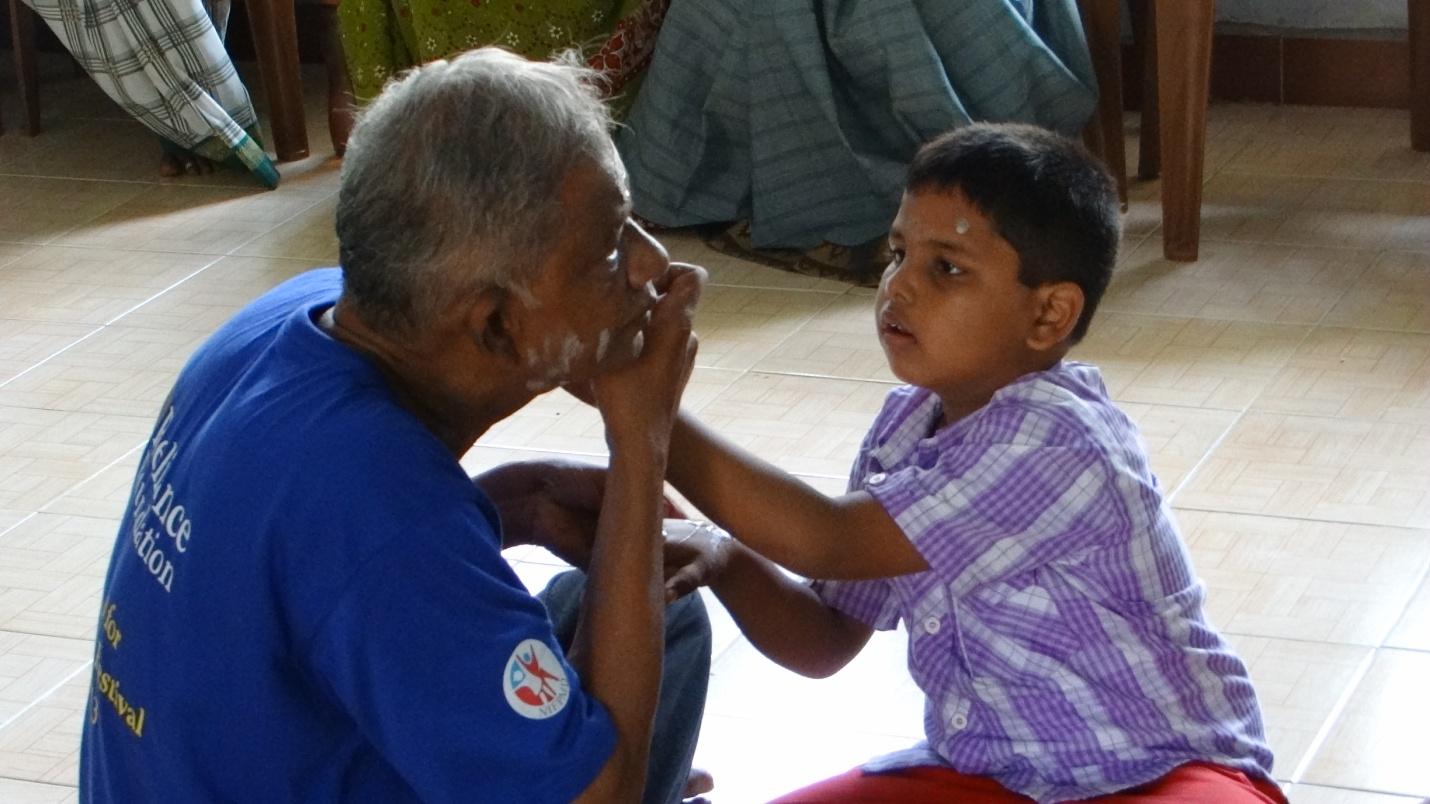“I create; therefore I am” John Sealy Brown a corporate Visionary. Every child is creative in his/her own way. Recognizing the child’s innate ability in the particular area of Creativity is the task for parents and special educators. Brushing aside conventional notions of creativity, one should look at the activities of the child; it may be watering the plants or dressing up a doll or even arranging a row of cars.
A creative Mind observes and recreates. Looks at the Mother and draws lines on the face of the Mother and makes the mother look a ghost or a cartoon character. Observation is the key skill involved as the basis of Creativity.
Imitation is the second step. I watch you driving a car and pretend with a toy that I am driving a car.
Ingenuous replay is the third step. Every child observes, every child imitates but only few children ingeniously recreate or freshly clone another activity born out of the action of driving a car.
Autism and creativity
It is acknowledged world over that children and adults in ASD have some special issues like social skills, communication barriers, eye-gaze, and eye contact and reduced attention span. Some behavior issues like stimming, echolalia, rocking, hand flapping and banging one’s head disturb the parents and teachers.
Drama can help in fostering the creativity of children and now research indicates that Drama training can actually mirror neurons and help the children with social skills and creativity.
Let us start with a simple theatre game. Improvise with an Object.
Both the parents and the child together play the game. Take for instance a pen. Father turns the pen into a Microphone and starts singing. Mother may turn that pen into a comb or a spoon. Encourage the child to transform the pen into something else, may be telescope. This is fun and coupled with Fun it stirs Imagination. If there are more members playing the Game, a pen can become nearly thirty other things depending on the imagination of the members of the Group.
Next a variation of the game. Improvise a person.
Choose cartoon characters. Chotta Bheem, Dora, epic characters, Ram, Hanuman and familiar persons like Father, mother, aunt, Grandfather.
Give a specific task for improvising. Talk like Chotta Bheem. Walk like Dora. How does Mother use the I pad, how does the father use I Pad. These activities improve observation skills and also help the child to imitate. Imitation can lead to mimicry. Mimicry may lead to acting with Imagination. They can create a world of Fantasy.

Gestures:
Expressing through Gestures without any words is an interesting game of creativity. From simple gestures one can move on to complex and subtle gestures. Open your arms and close them on your shoulders. Indicates a Hug. Simple. Just wave your right arm to say Bye. These are simple enough.
Call the child to come close to you by a Gesture. Ask the child to look up by a gesture of the Head lifting up.
From these simple gestures move slowly towards, Eye movements, looking with eyes half closed and winking at a person. Shoulders erect and stand firm on both feet. Look straight. The Body becomes a Gestural tool now. Children who are interested in classical dance can go through the various hand gestures and expressions of emotions through the eyes and face muscles. A king’s Body is different from a Beggar’s body. Play the game of Different bodies through Gestures.

Animal sounds: all children love animals. Be it a dog, or a cat or larger animals like the Cow, tiger, and elephant. We may exploit the love of animals into interesting games and build simple stories around them. How do you represent an elephant with hand gestures? Just use your arm as the trunk of an elephant. Or both arms as the ears of an elephant. One parent can use the arm as the trunk and the other parent can use arms as ears of an elephant. Simultaneously use the elephant sound.
You may use the nursery rhyme: Old Mc Donald had a Farm. Moo like a cat, bleat like a lamb
Bark like a dog. Try different breeds of dogs. The animal sounds can help you to identify your child’s love for imitation and the love for animals too.
Weather games: This is real fun game, may be played outdoors or indoor. In a park or in the beach or in the drawing room. If you are creative you may play anywhere. Play this game with barefoot.
Walk in the rain: imagine a down pour and walk. Walk in the hot sun: imagine walking barefoot on a hot day in a road.
Walk in the beach with waves touching your feet. Water rising to your knee.
Imagine climbing a rock in the hills on a snowy day.
Walk against the wind. Walk against a storm. Walk along a gentle breeze.
These games introduce weather conditions, and how the body responds to Weather.
Now play with colours. The most important aspect of this game is to enjoy a freedom to play with colors, not to restrict the child’s fancy. The sky need not be painted Blue always. If the child prefers to paint Green Sky, let the child do. Creativity demands freedom of expression. Use colours with indulgence and passion. Paint the face of Mother. Give a Facial to Mother. Use different natural colours like cucumber paste, papaya, yoghurt, Mango pulp. Very easy to play with and easily available at home.
This game encourages creativity and bonding between parents and children. The game is also useful for increasing the attention span of the child in an activity.
We may also bring in the animals again. We can use colurs to make animal masks. Use simple paper plates. Draw the Tiger with some yellow and red lines
Let the tiger’s eyes burn bright with some silver lining.
Simple way to teach the concepts of Shapes and Mathematics.
Put two dots of same colour on the papar plate. Join the two dots.
Now you get a straight line.
Put three dots : two on the straight line and one on the top
Connect the dots by a straight line and now you get a curve.
A fun way of playing and learning.
What do the Games do to children and parents?
The games encourage creative out of box thinking for children. It enhances their attention span of an activity. Helps them to relate themselves to the space and their own body. Specifically it helps the children with a lot of Mirror neuron activity in the Brain. It fires mirror neurons by activities like Imitation, playing a role. Mirror neurons also ,when fired, help the children to empathise and know what some one else feels. For parents it is an opportunity to bond with their children. Spending time with children in a creative way, parents also have fun and re-live their childhood. Most often we miss our childhood fun and the games help the parents to go through that childhood joy again.
Each game specifically addresses an issue: eye-contact; communication strategy; group play; tactile issues.
Children may or may not cooperate. Persistent efforts by parents and creatively modifying the games to make them interesting are requisites to make the children participate. Results can be achieved over a period of one or two weeks if played on a daily basis. If a child refuses to play one game, don’t lose heart. Try another game or a variation of the same game . There is not a rule : only one game is good.
Parents have to try out several games and see what works for their children and what does not work.
It would be good to try all the games and keep playing choosing a game a day so that the child is not bored. These games are for any child, including Neurotypical children, and particularly useful for children in the spectrum.
– Dr. Parasuram Ramamoorthi
For Further Details
Email: ram@velvi.org
Phone: +91 452 2384479 +91 9489873751 +91 9655573751
Website: http://www.velvi.org/